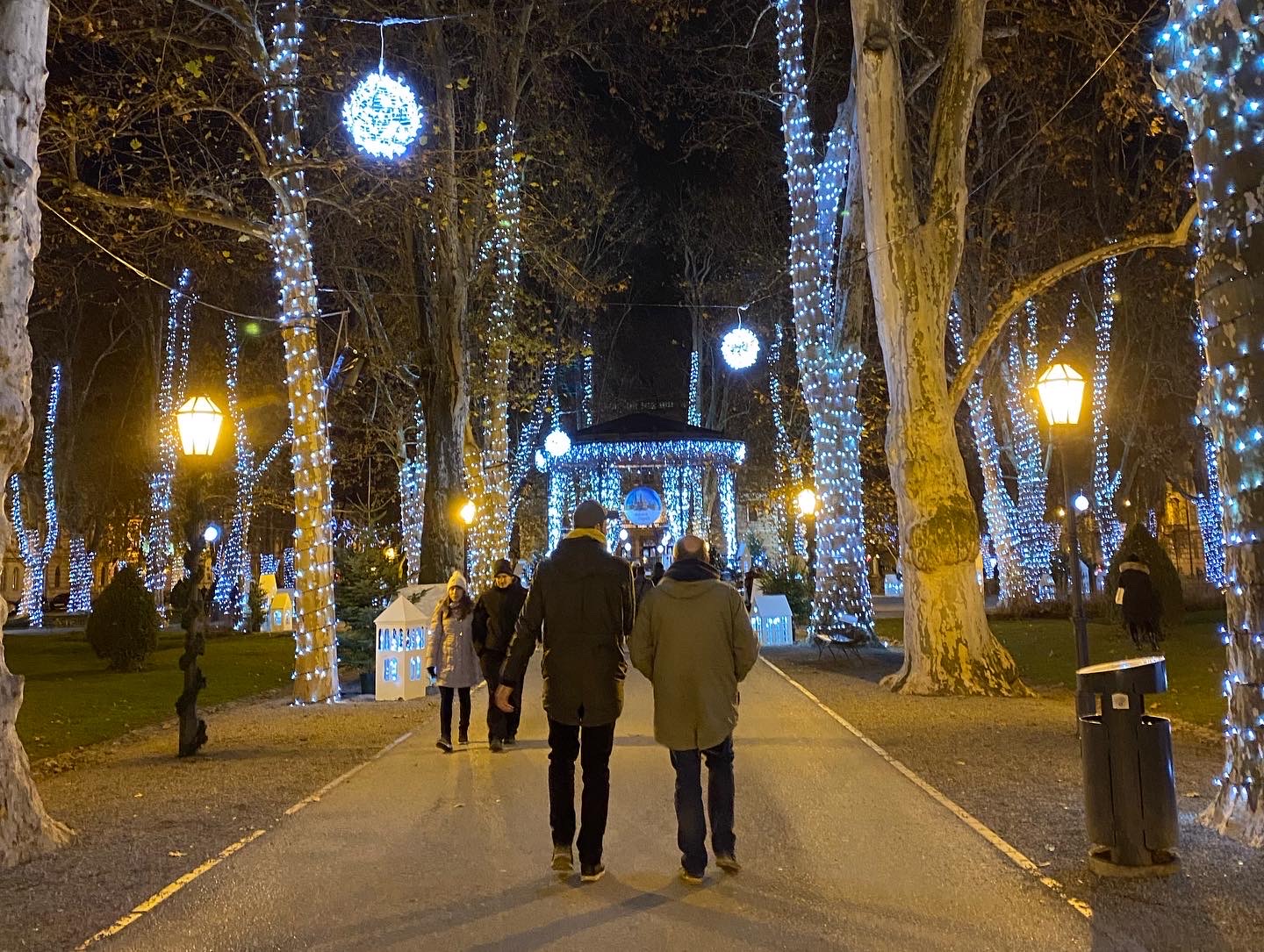Choosing Between Living in Zagreb or Dalmatia, Two Years Later
December 16, 2021 - After getting to know the capital of Croatia better this year, I was already imagining my life in Zagreb. However, one has to think twice before leaving Dalmatia behind so easily.
Seven months in Rijeka, and eight in Podstrana, which is located about 20 minutes south of Split. That is the time that, until March of this year, I had spent in Croatia since I arrived for the first time in October 2019. At that time I felt an urge to get to know the country beyond the coast, and Osijek was my main choice. Unfortunately, things did not work out for me to move to Slavonia, and my next destination would be Zagreb.
The impact of Zagreb on me was immediate. Parks everywhere, such a walkable city, a great public transport system, things to do everywhere and at all times, movement, life, great food... Zagreb has it all. One of the reasons why I went to Zagreb was to find a job, and this was the case in my second week there. I interpreted it as a sign to realize that my place was there, in the capital of Croatia.
A short video that I recorded and edited on the way from Split to Zagreb, with an emphasis on the landscapes between the two cities.
I would have liked to continue this article by saying that, after a few months, I managed to settle in Zagreb. But one thing led to another, and I ended up in Split after four months. Some will believe that because it was summer the decision was a bit obvious, but at some point, I really saw it possible to spend those hot months away from the coast. In July I returned to help my parents with our accommodation business during the season, and I was not yet financially ready to pay rent. In Zagreb, I was residing in student accommodation thanks to a scholarship, so that made it easy for me to live there.
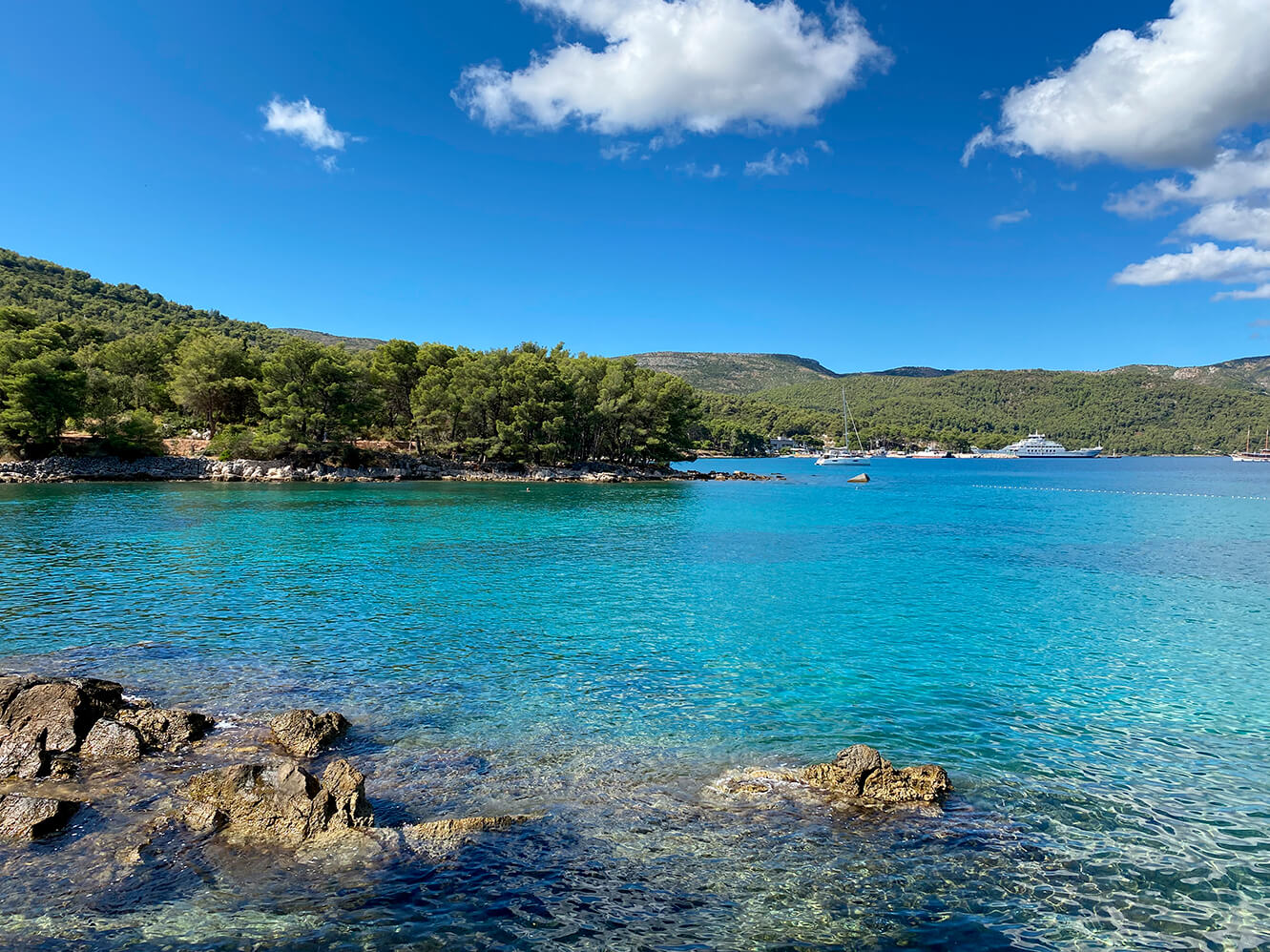
The view from Lanterna Beach, between the town and the ferry port of Stari Grad, on the island of Hvar. Heaven on earth. (Photo: Jose Alfonso Cussianovich)
I cannot say that I returned with sadness in my soul - the summer was spectacular, and for me, it is always special to be close to my family. The job I have allowed me to work in any corner of the country, so it wasn’t a big deal to move again. The reception of dozens of tourists who arrived during the season and the several beach days made summer go by very quickly for me. In the blink of an eye, it was already September. The climate in Dalmatia was the same or even more pleasant than in the previous months. I was aware that summer 2021 was slowly disappearing, but beach days, ice-cold beers, and air conditioning were still part of the routine. I still remember with great happiness the visit of my cousins, with whom we visited one of my favorite places - Stari Grad, on the island of Hvar. September was indeed a special month.
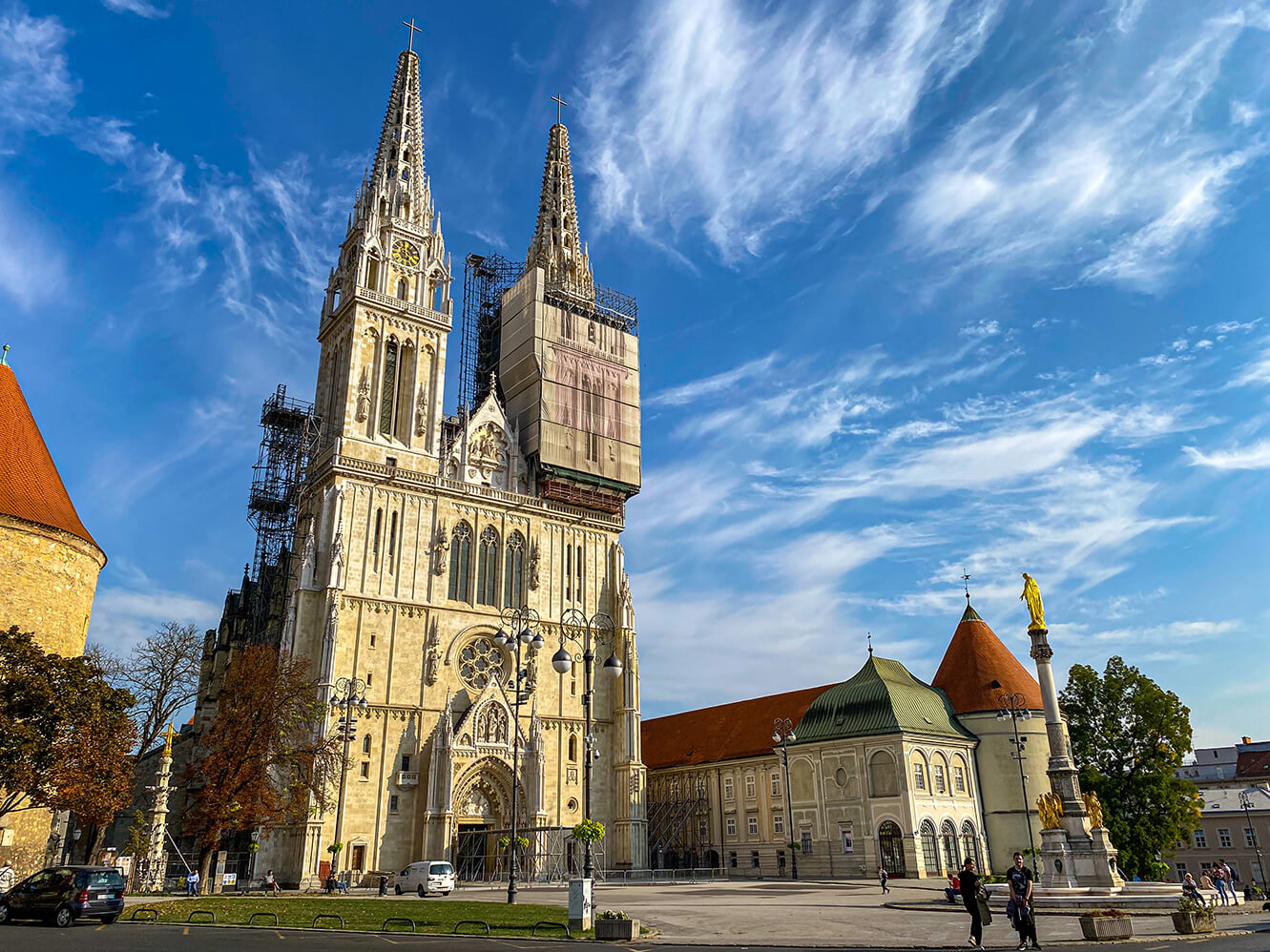
Zagreb Cathedral, when I visited the capital of Croatia in early October. (Photo: Jose Alfonso Cussianovich)
October came, and I noticed the changes when I made a short trip to Zagreb. The colors of the forests that accompany the E65 and E71 roads changed from strong green to reddish. The week I was in Zagreb, earlier that month, reminded me how much I missed the things I liked about it. That's when I said that, as a goal, I would come back at least once a month even if it's just to visit.
Shortly after that brief stay, I managed to convince my parents to go back together to spend a few days in the capital. We stayed around the corner from the Cathedral, and we really had a great time in those few days.
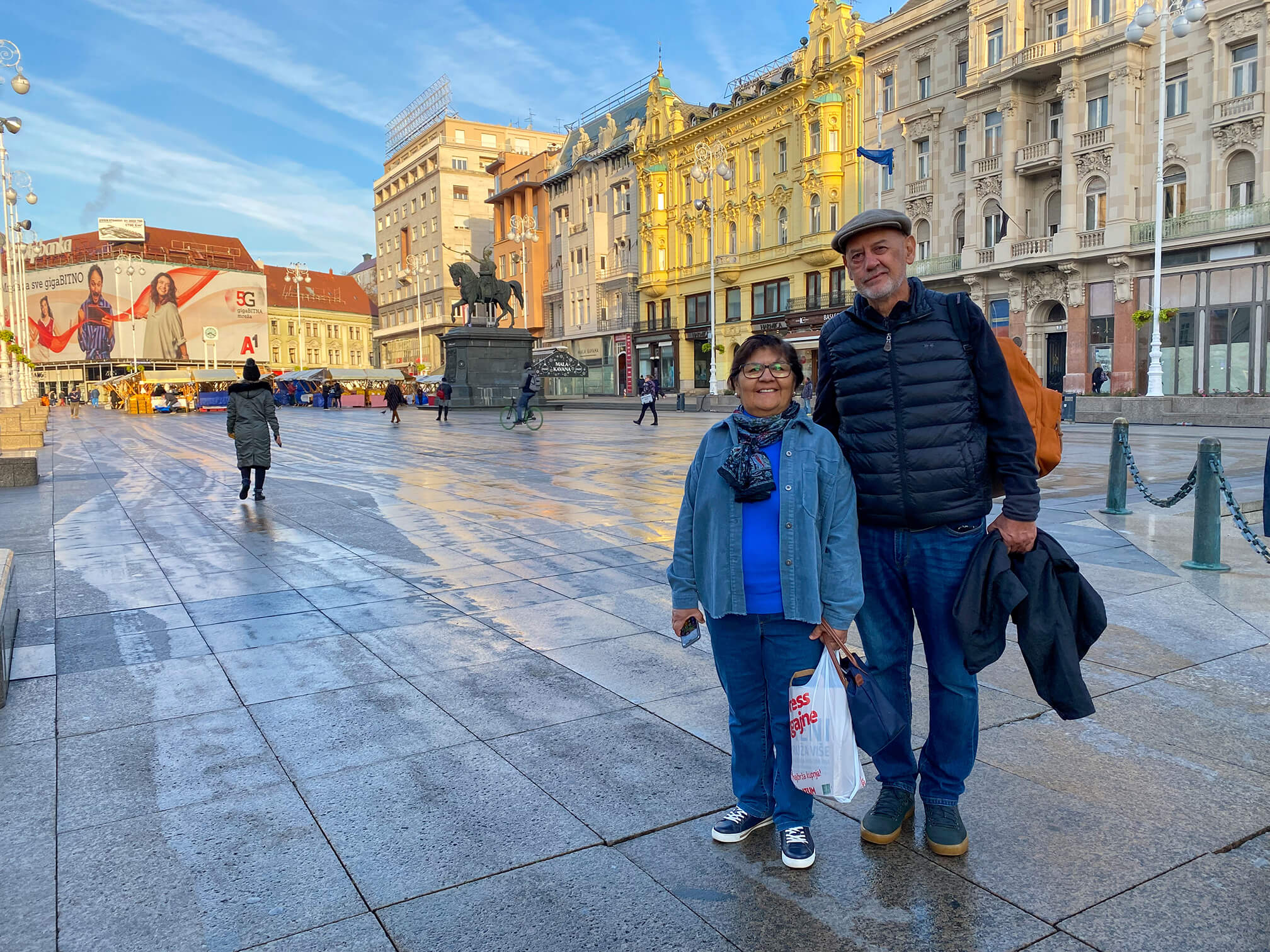
My parents, in Ban Josip Jelačić square on our little trip to Zagreb in October. (Photo: Jose Alfonso Cussianovich)
My next visit would be last week when it was time to celebrate TCN's Christmas dinner. It was the first time I went to Zagreb with a pre-winter ambiance. Despite the cold weather, I have never seen a city as lively and vibrant as Zagreb is in Advent. I kept reminding myself of the many benefits that living in Zagreb entails, which even go beyond the lifestyle, such as the efficiency of public institutions or the ease of meeting new and valuable people even in such everyday situations.
Zrinjevac Park in Zagreb, during Advent. (Photo: Jose Alfonso Cussianovich)
By then, I was already thinking about the cost of living there and it even occurred to me to try to convince my parents that living in Zagreb and running our business in Split at the same time was a very feasible alternative.
But it was time to return to Split, and in less than a week, I reconsidered everything I had been thinking throughout this year about living in Zagreb. Five things made me change my mind.
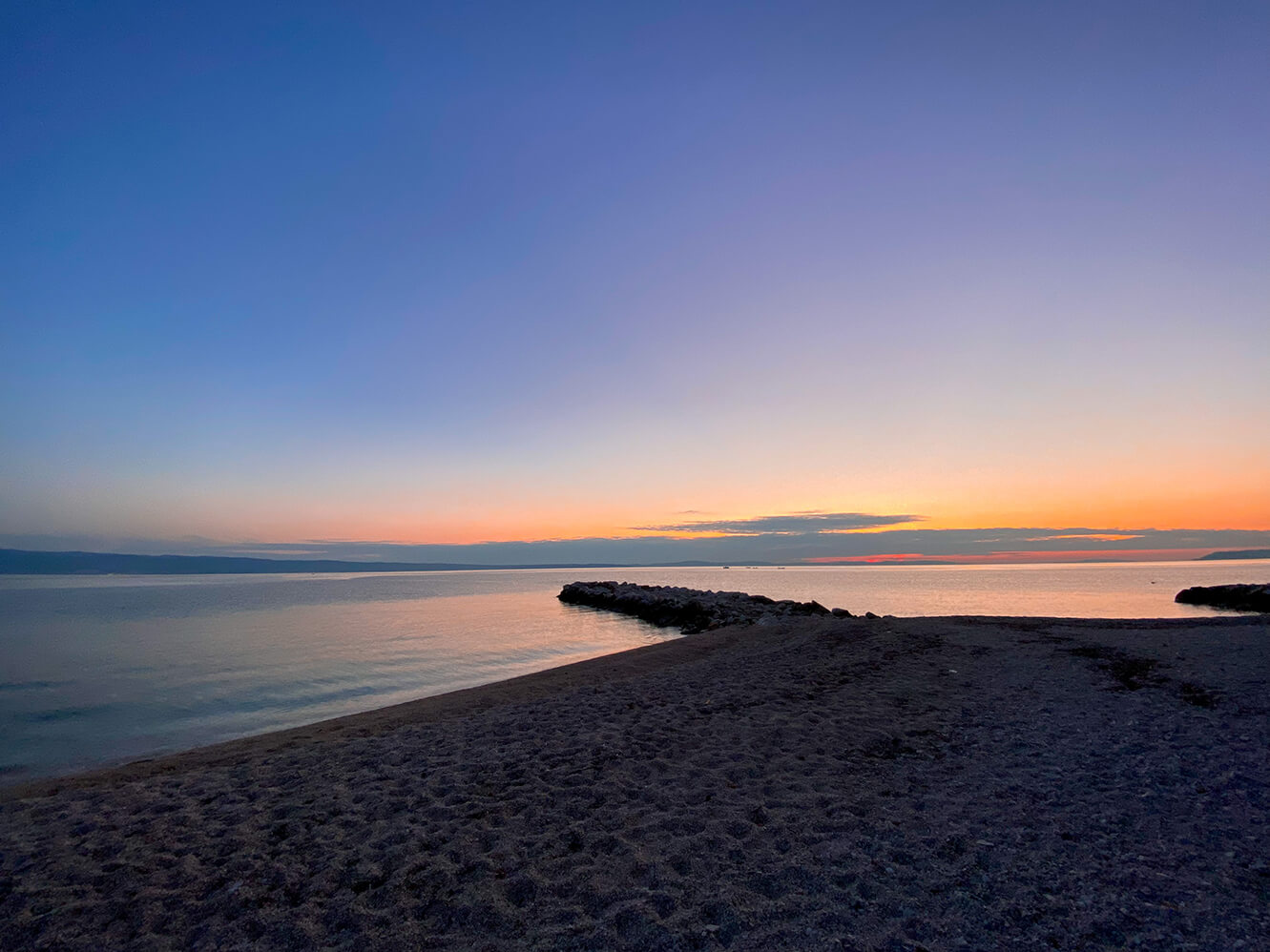
One of the many scenes that one can find when walking along the beaches of Podstrana. In this case, between sv. Martin and the Le Meridien Lav hotel. (Photo: Jose Alfonso Cussianovich)
First of all, I decided to walk along the beaches of Podstrana, from Saint Martin to the Le Meridien Lav hotel, during sunset. It is definitely not the ideal time to take a dip in the sea, but just being close to the Adriatic Sea is more than enough for me and I couldn't afford to be so far from the sea. This almost spiritual walk has been crucial for me to think things over.
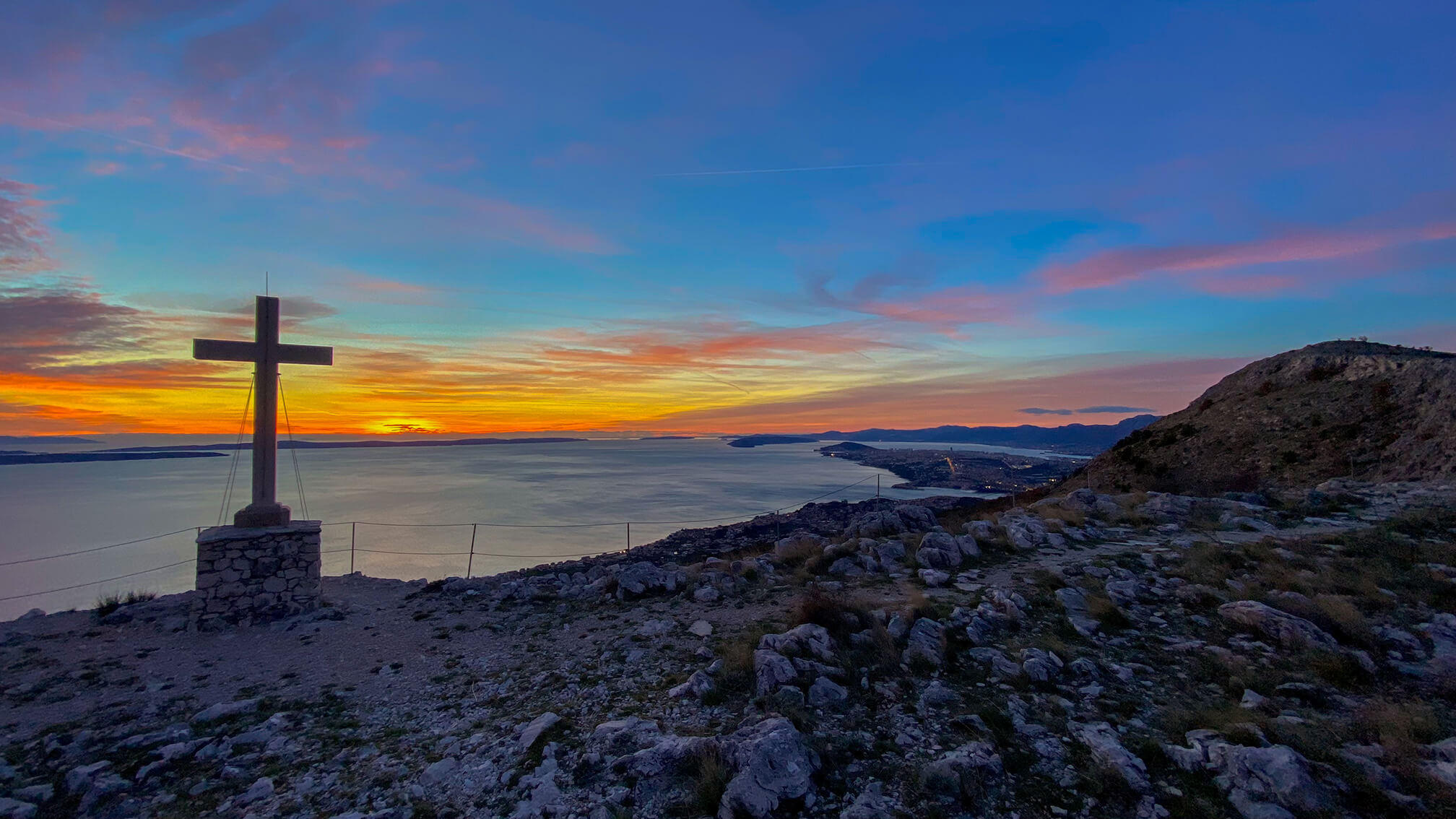
The view from the mountain, in Podstrana, next to the church of sv. Juraj. Below right, you can see the city of Split. (Photo: Jose Alfonso Cussianovich)
Secondly, the little hikes I made to the upper part of Podstrana these last two days, both on a small hill behind my house and on the mountain where the small church of St. Juraj is located. In recent weeks, gray skies, cold weather, and storms prevailed. But when I returned from Zagreb, I found sunny days, warmer weather, and stunning sunsets. The images I captured of these last two days, both in photo and video, speak for themselves. Never in my life have I witnessed such spectacular views, and that’s not an overstatement.
A short video that I recorded and edited in Podstrana, where I live, between December 14th and 15th. The sunsets were spectacular.
Third, the Split Winter Tourism roundtable. I had the great opportunity to be present at the previous meetings and at the great event held at Chops Grill on Monday. Although my role was quite minimal, the important thing for me was being able to listen to many of the people who in recent years have moved mountains to make Split a twelve-month destination and those who could finally make it happen. Self-criticism, ideas, potential collaborations, their will... all this helped me to think that the future in Split can only be better, especially if intentions and actions go hand in hand this time. It excites me to think that, with the skills and ideas that I have, I can be part of that change, in some way.
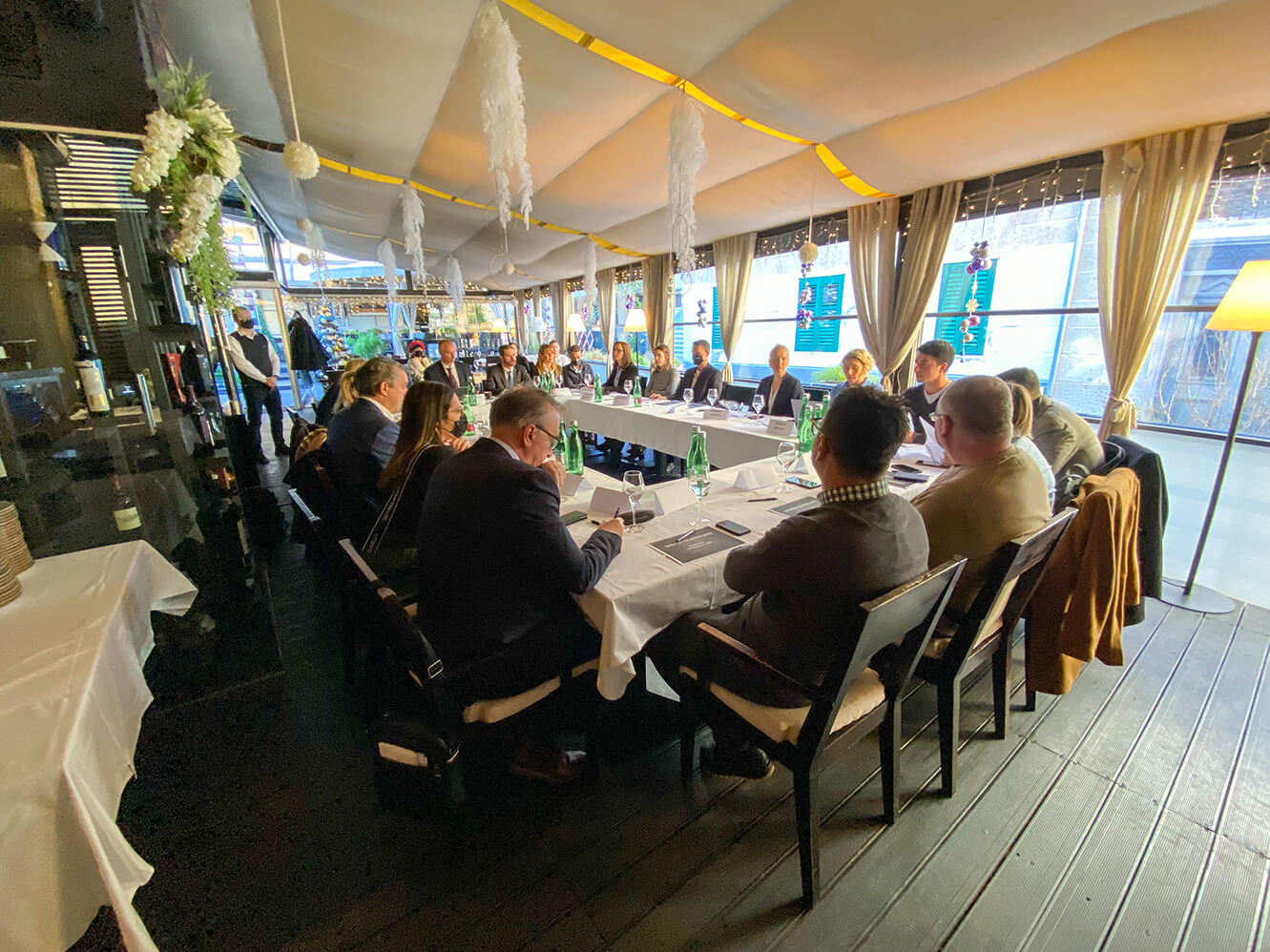
The Split Winter Tourism Roundtable, which was held at Chops Grill on Monday. (Photo: Jose Alfonso Cussianovich)
Fourth, and you probably think that I let it slip when I remembered October: the olive trees. "Who in his right mind chooses one place for another, just for the olive trees?", you might ask yourselves. It is not so much for the trees themselves, but for the experience. I was aware that the olive harvest season began in mid-October, and after missing the opportunity to see it up close at the Olive Picking Competition on the island of Brač, I decided to be more attentive to the slightest chance to live that experience.
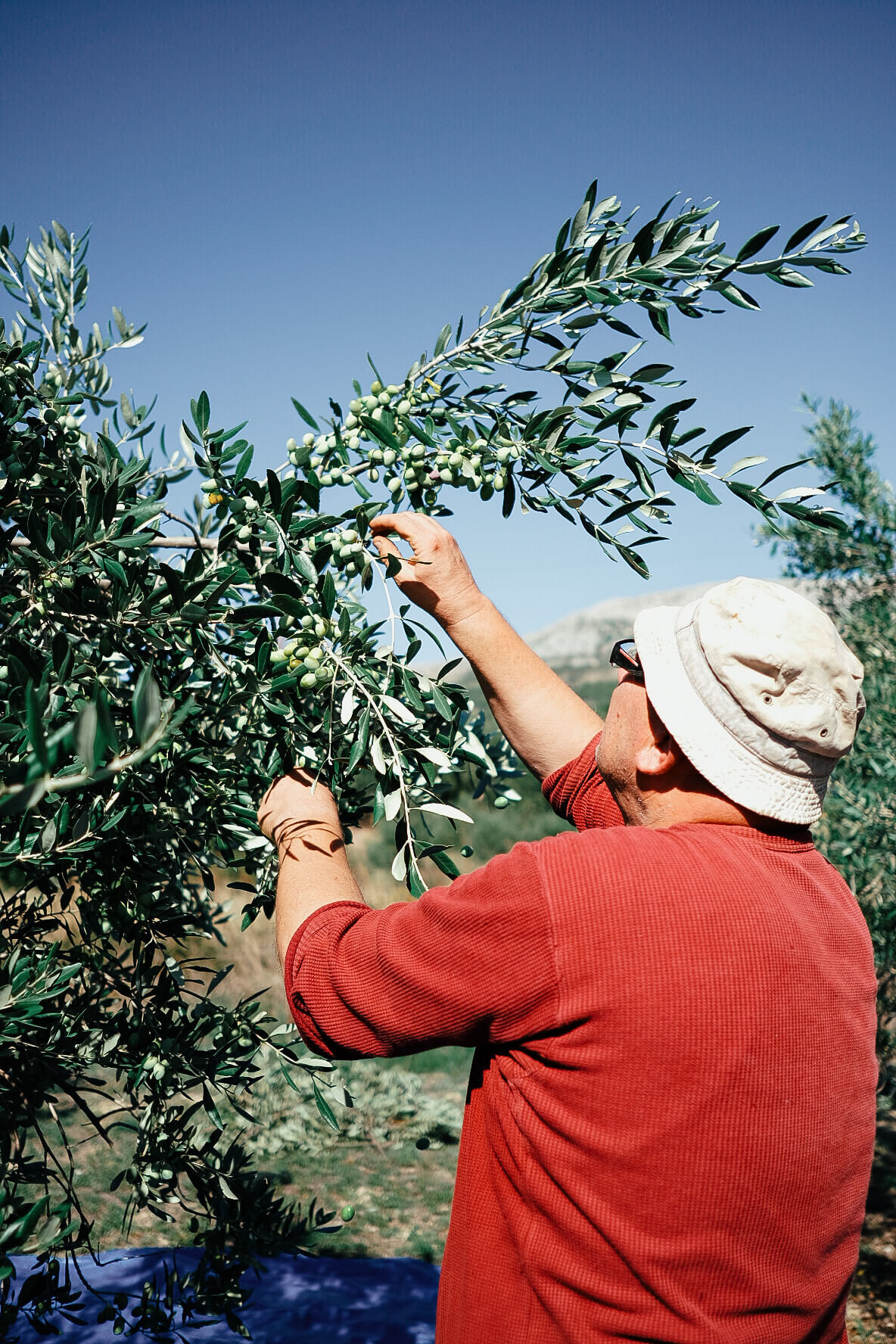
One of the photos I took while accompanying some neighbors from my neighborhood while picking olives from their trees. (Photo: Jose Alfonso Cussianovich)
Fortunately, behind the building I live in, there are many olive trees. For several days I looked to see if someone was coming to collect the olives, and indeed one day it happened. Without thinking twice, I walked there with my camera and asked a family of three if I could take some photos of them and record some videos while they picked the olives. What at first seemed like a journalistic task, turned into a very friendly afternoon in which we shared stories, and especially the father, who told me for hours everything I should know about a tradition as ancient as collecting olives. You know that as you go up the highway towards the mainland, the olive trees begin to disappear. You probably think it's a bit of a silly reason, but I just don't see myself living far from these kinds of experiences. Truth be told, one of my dreams is to have my own olive tree and make my own olive oil. So there you have it.
Last, and maybe most importantly, my Croatian ancestor, Pero Kusijanović, was born in the small district of Mokošica, in Dubrovnik and was, by all means, a true Dalmatian. Pero migrated to Peru approximately 150 years ago, and I don't think he would have ever imagined that his descendants would choose to return and settle in Zagreb, far from the Adriatic. I will honor him, in some way, trying to move my future forward here in Dalmatia.
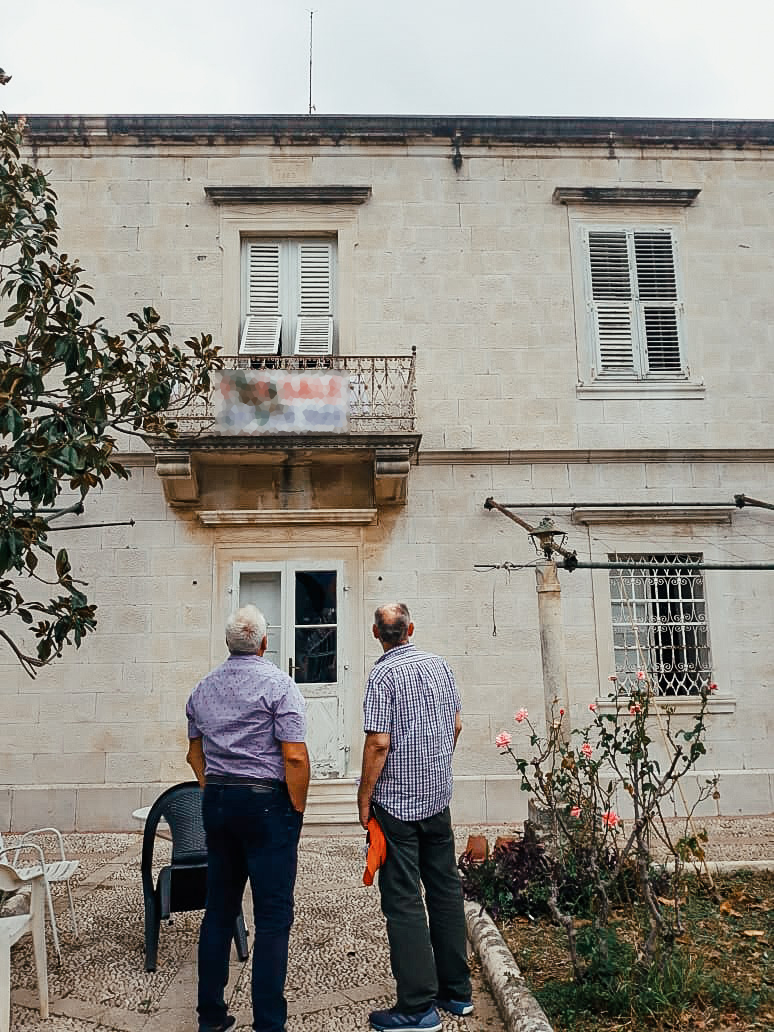
My father (right) visited the house in Mokošica, where our ancestor, Pero Kusijanović, was born and raised. (Photo: Patricia Medina)
I will never regret the experiences and moments lived anywhere other than here. If something makes a country like Croatia special, it is that each of its square kilometers has something prepared for you, and capable of marking you for life. But I do have to admit that there have been times when I underestimated the beauty of living in Dalmatia, and for that, I apologize. Sometimes you don't have to make pros and cons lists to compare one place to another. Sometimes the region has a vibe that is difficult for others to feel or understand, as the great Daniela Rogulj would say.
Many believe that Dalmatia is only the islands and the coast (which alone are good reasons to settle here), but many are unaware of the history and beauty of places Knin or Sinj, the latter I was able to visit at the end of October with my family and really blew me away.
Split, Zadar, Dubrovnik, Šibenik, Ston, Trogir, Korčula, Hvar, Knin, Sinj, Primošten, Omiš, Makarska... how can you forget about these places and many others with such ease? Sometimes it is about what a place already is, and sometimes what a place can become. For the moment, I choose the latter. There’s so much for me to discover here before jumping to conclusions, or Zagreb.
For more, check out our dedicated travel section.
New Zagreb Urban Living Area to be Erected in Desirable City Location
February the 5th, 2021 - A new Zagreb urban living settlement is being constructed in a very desirable and attractive location within the Croatian capital, and it will likely do well in attracting more people back to city living following the earthquake of March 2020.
As Poslovni Dnevnik writes, given how much potential this new Zagreb urban living area has to truly become a very large settlement, city district leaders are enthusiastic about turning 30.35 acres of shrubs and vegetation into the perfect place for family life for about 1,500 new residents.
There are three primary schools located nearby the new settlement, the middle one is about ten minutes away on foot, and to the very centre of Dubrava, and thus to shopping centres, banks, post offices and medical facilities, it would take residents a maximum of five or six minutes by car. Although they would have everything they might need in the area's immediate vicinity, they'd still have the luxury of living in one of the greenest parts of Zagreb, right next to the Cucerska river stream, writes Vecernji list.
This new Zagreb urban living area should be located in an area called Branovecina II. What the new zone bordered by Branovecina street to the east, the edge of the settlement of the same name to the north, the stream to the south and the extended Klin and Rudolf Kolak streets to the west and south will look like has been described in the urban development plan (UPU) adopted by the City Assembly this past summer.
''It will be a quality urban settlement. We also had a public debate and the idea was well received. Everyone likes it, and the owners of the plots in the area of the future settlement can hardly wait for the construction to start. Particularly he road through the settlement, because they'd also build shopping centres there,'' said Damir Onisko, president of the Gornja Dubrava District Council. He hopes, he added, that the projects for the extension of Klin street all the way to Lektrscica, as well as Kolakova, will be realised sooner, because in this way, large parts of the Gornja Dubrava and Sesvete districts will be even better interconnected.
''I'm pushing for Klin street to be extended even before the construction of this new Zagreb urban living settlement begins. The road isn't a prerequisite for the project, but it will certainly help things along,'' Onisko pointed out.
What precisely will be built in the new city settlement? Residential and commercial buildings mostly, as well as houses, up to the height of four floors. But here and there, in addition to the main roads, seven-story buildings will be dotted around. In the very centre of the new area, a social facility such as some sort of home, medical facility or church should spring up, and next to it a kindergarten intended for 200 children. Both facilities will be positioned so that they can be reached from any part of the neighbourhood within just five minutes.
For the latest travel info, bookmark our main travel info article, which is updated daily.
Read the Croatian Travel Update in your language - now available in 24 languages.


